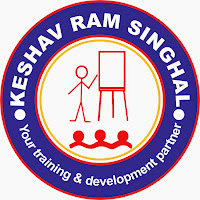TRAINING HANDBOOK
ON
ISO 9001:2015 QMS - APPLYING RISK-BASED THINKING (RBT)
CONTENTS
# 01 - Introduction
# 02 - The 2008 global financial crisis and risk management
# 03 - Definition of risk
# 04 - Nature and impact of risk
# 05 - Why we need risk-based thinking?
# 06 - Risk-based thinking in ISO 9001:2015 QMS
# 07 - Benefits of applying risk-based thinking
# 08 - Summarized hint for applying risk-based thinking
# 09 - Risk awareness culture in your organization
# 10 - Risk management or formal risk-based approach
# 11 - Process diagram for Risk-based thinking (RBT)
# 12 - Understanding the organization and its context, Step-by-step process
# 13 - External and internal issues of an organization, Some external issues, Some internal issues
# 14 - Format - Context of the organization - Determining external and internal issues
# 15 - Understanding the needs and expectations of interested parties
# 16 - Format - Determining interested parties and their needs and expectations
# 17 - Interested parties and their needs and expectations - A few examples
# 18 - Planning and addressing risks and opportunities
# 19 - Overview of risk assessment tools and techniques
# 20 - Brainstorming
# 21 - Check-lists
# 22 - Failure Modes and Effect Analysis (FMEA)
# 23 - Delphi technique for risk determination
# 24 - A simple method to determine risks and opportunities
# 25 - Format for determining risks and opportunities
# 26 - Examples of some risks
# 27 - Opportunities and a few examples
# 28 - Risk register
# 29 - Risk matrix and risk matrix chart diagram
# 30 - Conclusion
# 31 - Bibliography (a list of a few books and web pages)
# 32 - Evaluation Questionnaire
# 33 - Your feedback
# 34 - Acknowledgement
By attending the training and/or reading this literature, a participant will be able to understand:
- Concept of risk-based thinking,
- ISO 9001:2015 QMS requirements related to risk-based thinking,
- Benefits of using risk-based thinking,
- An overview of various risk assessment tools - Techniques and methodologies that you may apply in your QMS,
- Using risk-based thinking to achieve better internal controls.
- Demonstrating risk-based thinking during audits (internal and external).
If you are interested to see the Preview of the Training Handbook, please send an email to:
keshavsinghalajmer@gmail.com or krsinghal@rediffmail.com.

